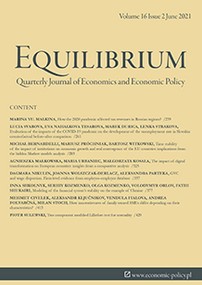Application of selected data mining techniques in unintentional accounting error detection
Application of selected data mining techniques in unintentional accounting error detection
Author(s): Mário Papík, Lenka PapíkováSubject(s): Business Economy / Management, Methodology and research technology, Accounting - Business Administration
Published by: Instytut Badań Gospodarczych
Keywords: financial fraud; unintentional accounting errors; financial restatements; decision tree; classification and regression tree; random forest;
Summary/Abstract: Research background: Even though unintentional accounting errors leading to financial restatements look like less serious distortion of publicly available information, it has been shown that financial restatements impacts on financial markets are similar to intentional fraudulent activities. Unintentional accounting errors leading to financial restatements then affect value of company shares in the short run which negatively impacts all shareholders. Purpose of the article: The aim of this manuscript is to predict unintentional accounting errors leading to financial restatements based on information from financial statements of companies. The manuscript analysis if financial statements include sufficient information which would allow detection of unintentional accounting errors. Methods: Method of classification and regression trees (decision tree) and random forest have been used in this manuscript to fulfill the aim of this manuscript. Data sample has consisted of 400 items from financial statements of 80 selected international companies. The results of developed prediction models have been compared and explained based on their accuracy, sensitivity, specificity, precision and F1 score. Statistical relationship among variables has been tested by correlation analysis. Differences between the group of companies with and without unintentional accounting error have been tested by means of Kruskal-Wallis test. Differences among the models have been tested by Levene and T-tests. Findings & value added: The results of the analysis have provided evidence that it is possible to detect unintentional accounting errors with high levels of accuracy based on financial ratios (rather than the Beneish variables) and by application of random forest method (rather than classification and regression tree method).
Journal: Equilibrium. Quarterly Journal of Economics and Economic Policy
- Issue Year: 16/2021
- Issue No: 1
- Page Range: 185-201
- Page Count: 17
- Language: English

